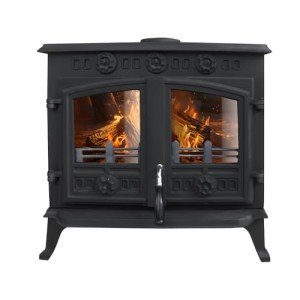Why No One Cares About Small Multi Fuel Burner
The Versatility of Multi-Fuel Stoves for Small Spaces
In the ever-evolving landscape of home heating solutions, multi-fuel stoves have actually become a popular option, particularly for those living in compact home. These stoves, which can burn different kinds of fuel such as wood, coal, and pellets, provide considerable benefits in regards to performance, cost-effectiveness, and ecological friendliness. This post checks out the advantages of small multi-fuel stoves, their functionality, and some often asked concerns to help potential purchasers make informed decisions.
The Benefits of Using a Multi-Fuel Stove
1. Versatility
One of the main benefits of a multi-fuel stove is its flexibility. House owners can select from various kinds of fuel based upon availability, cost, and personal preference. The versatility of burning wood, coal, or pellets permits more effective and tailored heating.
2. Cost-Effective Heating
In many regions, fuel costs fluctuate substantially. A multi-fuel stove offers the choice to change between various fuel sources as market rates change. For example, throughout the cooler months, coal might be more affordable than wood, permitting users to change their heating technique in response to rate shifts.
3. Environmental Considerations
Burning fuels like wood and pellets is often considered more sustainable compared to fossil fuels. Multi-fuel stoves can use eco-friendly alternatives, minimizing carbon footprints. Additionally, many modern multi-fuel stoves are developed to burn fuel easily, resulting in less contaminants and better effectiveness.
4. Space-Saving Design
Small multi-fuel stoves are designed for compact locations, making them ideal for houses, small homes, or small cabins. Numerous designs integrate aesthetic design with practical effectiveness, supplying heat without frustrating restricted space.
5. Reputable Heating Solutions
Multi-fuel stoves supply a reliable source of heating, particularly throughout power failures. They allow property owners to preserve warmth even when electrical energy is unavailable, making them a useful option for areas vulnerable to serious weather.
How Does a Multi-Fuel Stove Work?
Multi-fuel stoves function through a combustion chamber where different fuels are burned.
Air Circulation: These stoves are equipped with a system that ensures ideal air circulation, which is crucial for achieving high-efficiency levels and minimal emissions.
Fuel Selector: Many designs feature a fuel selector that permits users to pick the kind of fuel being burned, improving performance.
Heat Exchangers: Some stoves feature heat exchangers to make the most of heat output, allowing the stove to warm the space efficiently.
Table: Comparison of Common Multi-Fuel Stove Fuels
Fuel Type
Availability
Effectiveness (%)
Environmental Impact
Expense (per ton)
Wood
High
70-85
Moderate, eco-friendly
₤ 200 – ₤ 300
Coal
Moderate
65-80
Higher emissions
₤ 150 – ₤ 250
Wood Pellets
Moderate
85-90
Low, sustainable
₤ 250 – ₤ 400
Biomass
Low
75-90
Low, eco-friendly
Differs widely
Selecting the Right Multi-Fuel Stove
When picking a small multi-fuel stove, several factors necessitate factor to consider:
Size and Space
- Step the available space to make sure compatibility.
- Make sure the stove fits the visual of the space.
Fuel Type
- Consider the primary fuel type offered in your area.
- Examine which fuel uses the very best cost-efficiency for your needs.
Effectiveness Rating
- Inspect the stove's efficiency score (the greater, the much better).
- Try to find stoves certified for very little emissions.
Installation and Ventilation
- Examine setup requirements, consisting of venting needs.
- Speak with professionals when essential to ensure security and adherence to policies.
Brand Reputation
- Research study brands for reliability and client service.
- Check out evaluations and seek recommendations from existing users.
Frequently Asked Questions About Multi-Fuel Stoves
1. Are multi- Best Multi Fuel Stove UK to utilize?
Yes, multi-fuel stoves are usually considered safe when set up and kept according to the maker's guidelines. Routine cleaning and inspections can help avoid issues.
2. Can Double Fronted Multi Fuel Stoves use different fuels in the very same stove?
Yes, among the primary benefits of multi-fuel stoves is their ability to burn various fuels. Always refer to the producer's instructions regarding suitable fuels.
3. How do I maintain a multi-fuel stove?
Regular maintenance includes cleaning up the ash pan, checking flues, and checking seals. Yearly expert examinations are recommended to guarantee safe operation.
4. What is the average lifespan of a multi-fuel stove?
With correct upkeep, a sound multi-fuel stove can last anywhere from 15 to 25 years.
5. Do I need an unique chimney for a multi-fuel stove?
Most multi-fuel stoves require a chimney that satisfies particular policies regarding flue size and product. Seek advice from a professional for guidance customized to your scenario.
In conclusion, small multi-fuel stoves provide remarkable adaptability, useful heating services, and energy effectiveness, making them an exceptional option for small spaces. By understanding the advantages and considerations associated with multi-fuel stoves, property owners can enjoy a comfy, cost-effective, and eco-friendly heating option. As city living continues to trend towards restricted area, these stoves represent a forward-thinking technique to conventional heating methods.
